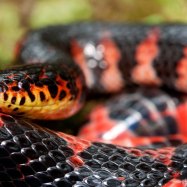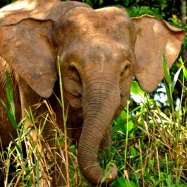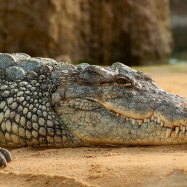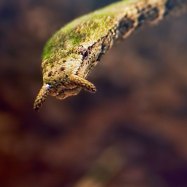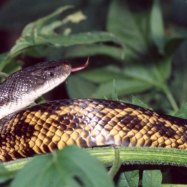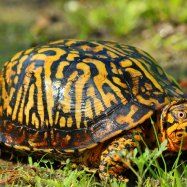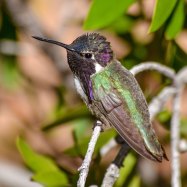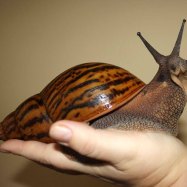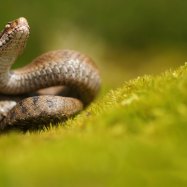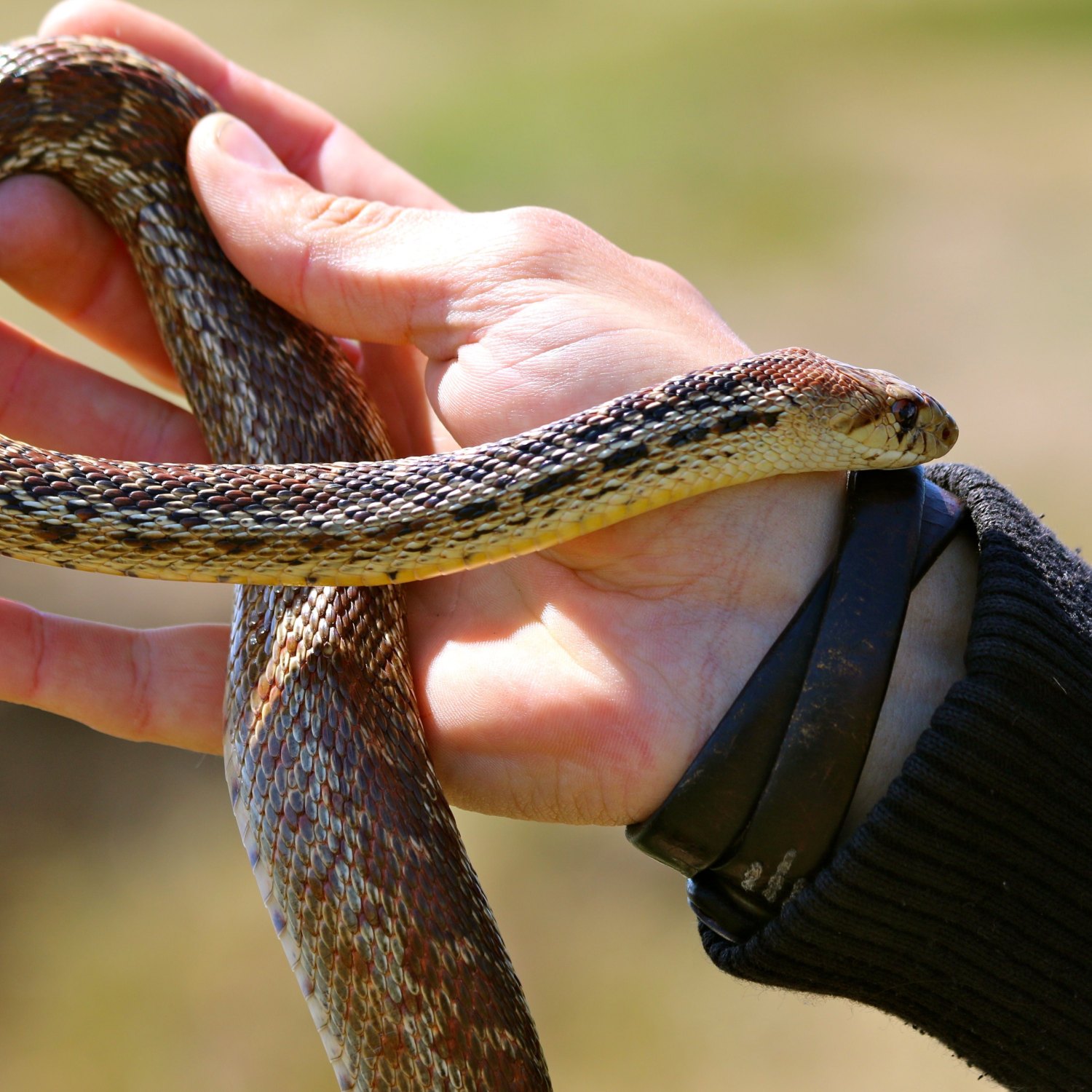
Gopher Snake
3 to 7 feet
The Gopher Snake, known for its long and slender body, can grow up to 7 feet in length. It can be found in the western and central parts of North America. Scientifically classified under Colubridae family, these snakes are non-venomous and play a vital role in controlling rodent populations. #animals #snake #NorthAmerica
Animal Details Summary:
Common Name: Gopher Snake
Kingdom: Animalia
Habitat: Grasslands, forests, deserts
The Versatile Gopher Snake: A Master of Adaptation
In the vast landscape of North America, among the grasslands, forests, and deserts, lives a creature known for its adaptability and resilience – the Gopher Snake. Scientifically known as Pituophis catenifer, this reptile is more commonly known as the Gopher Snake due to its preferred diet of small mammals, including gophers.As a member of the animal kingdom, the Gopher Snake has a diverse lineage that can be traced back to the kingdom of Animalia. It falls under the phylum of Chordata, meaning it possesses a spinal cord and a backbone Gopher Snake. Along with other snakes, it belongs to the class of Reptilia, which is characterized by cold-bloodedness and scales. The Gopher Snake belongs to the order Squamata, which includes lizards, snakes, and amphisbaenians. It is a part of the family Colubridae, which is also the largest family of snakes.
The Gopher Snake is a remarkable creature, with its impressive adaptability and range. It can be found in a variety of habitats, from forests and grasslands to deserts, adapting to each environment with ease. This makes it a true testament to the saying “survival of the fittest.” Its ability to thrive in different environments has earned it the reputation of being one of the most widespread snakes in North America.
Being a carnivorous species, the Gopher Snake's feeding method is quite intriguing. As its name suggests, it feeds primarily on gophers, a small rodent found in underground burrows Ground Snake. However, its versatile diet also includes other small mammals such as mice, rabbits, and other snakes. This adaptability in its feeding habits is yet another example of the Gopher Snake's remarkable ability to thrive in different environments.
The geographical distribution of the Gopher Snake covers a significant portion of North America. Its country of origin is the United States, where it can be found in western and central parts of the country. It has also been introduced to some parts of Canada. With such an expansive range, it is no wonder that it has a significant presence in various ecosystems, playing a crucial role in maintaining the balance of the food chain.
The Gopher Snake has a relatively simple and distinct appearance, making it easily recognizable in its natural habitat. Its coloration varies, but it is typically brown or yellow with dark blotches. This pattern helps it blend in with its surroundings, making it less visible to potential predators and its prey. Its body shape is also worth noting – long and slender, with a relatively small head. This gives it a unique advantage when navigating through the underground burrows of its prey.
The average length of a Gopher Snake ranges from 3 to 7 feet, although some specimens have been known to grow up to 9 feet long. These snakes have a distinct feature where their heads are much larger than their necks, which helps them swallow their prey whole. Their body is also covered in smooth scales, which make them an efficient burrower.
One of the most intriguing aspects of the Gopher Snake is its defense mechanism, known as "bluffing." When threatened, it will hiss loudly, mimic rattlesnake sounds, and even strike with its mouth closed, in an attempt to intimidate its predator. However, they are non-venomous and pose no real danger to humans. This bluffing behavior is an essential adaptation to its environment, where predators such as hawks and coyotes are prevalent.
These snakes have a unique breeding process, with their mating season typically occurring in spring or fall. After mating, the female will lay eggs, with the number varying from 12 to 24. She will then coil around the eggs to provide warmth and protect them until they hatch in about two to three months. The hatchlings closely resemble adult Gopher Snakes, and they are immediately capable of fending for themselves.
While Gopher Snakes are considered harmless and beneficial to the ecosystem, they are often feared and misunderstood by humans. Many people mistake them for rattlesnakes and mistakenly kill them out of fear. However, these snakes play a crucial role in keeping rodent populations in check, which is beneficial to humans and other species.
Overall, the Gopher Snake's remarkable adaptability, wide geographical distribution, and unique features make it a fascinating creature worth learning more about. Its ability to survive and thrive in different environments is a testament to its resilience and evolution as a species. As we continue to learn more about this remarkable snake, one thing is for sure – the Gopher Snake is truly a master of adaptation, and it deserves our respect and admiration.

Gopher Snake
Animal Details Gopher Snake - Scientific Name: Pituophis catenifer
- Category: Animals G
- Scientific Name: Pituophis catenifer
- Common Name: Gopher Snake
- Kingdom: Animalia
- Phylum: Chordata
- Class: Reptilia
- Order: Squamata
- Family: Colubridae
- Habitat: Grasslands, forests, deserts
- Feeding Method: Carnivorous
- Geographical Distribution: North America
- Country of Origin: United States
- Location: Western and central parts of North America
- Animal Coloration: Varies, but typically brown or yellow with dark blotches
- Body Shape: Long and slender
- Length: 3 to 7 feet
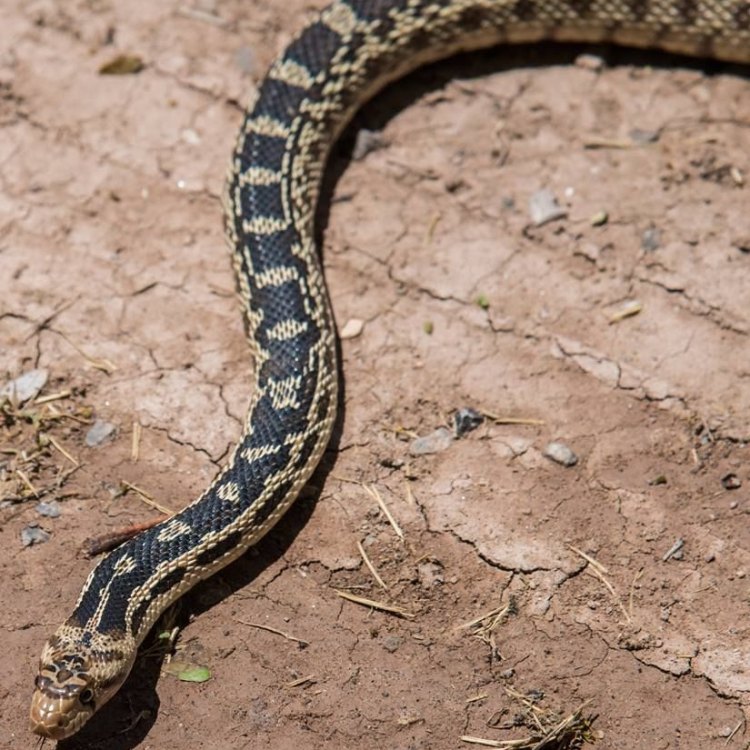
Gopher Snake
- Adult Size: 4 to 6 feet
- Average Lifespan: Up to 12 years in the wild
- Reproduction: Sexual
- Reproductive Behavior: Mating occurs in the spring
- Sound or Call: Hissing sound when threatened
- Migration Pattern: Non-migratory
- Social Groups: Solitary
- Behavior: Nocturnal
- Threats: Habitat loss, road mortality, and persecution by humans
- Conservation Status: Least Concern
- Impact on Ecosystem: Helps control rodent populations
- Human Use: Popular in the pet trade
- Distinctive Features: Large head, keeled scales, and a pointed tail
- Interesting Facts: Gopher snakes are often mistaken for rattlesnakes due to their similar coloration and behavior of vibrating their tails when threatened.
- Predator: Birds of prey, coyotes, and other large predators
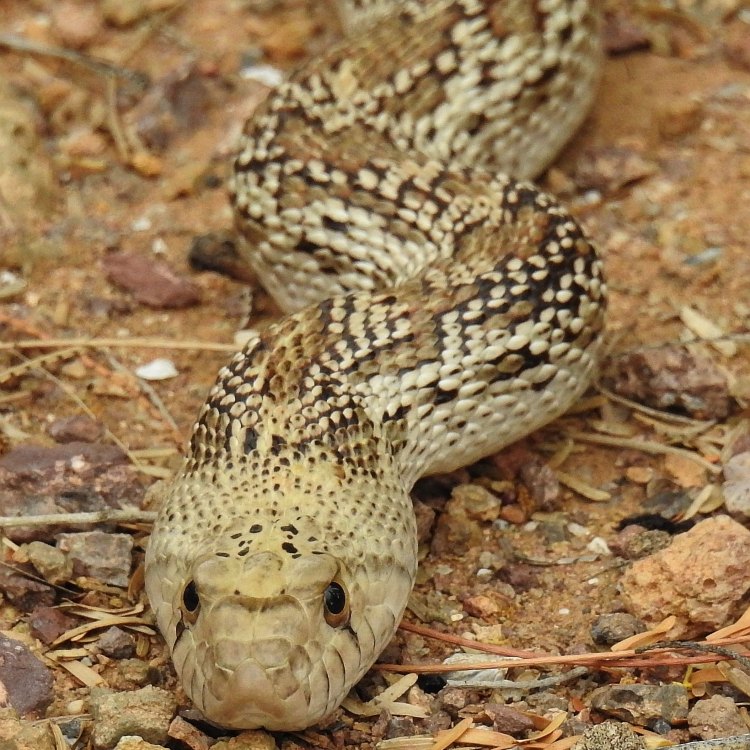
Pituophis catenifer
The Fascinating World of Gopher Snakes: Nature's Unsung Rodent Controllers
Gopher snakes, also known as the western or bull snake, are one of the most widespread and unique species of snakes found in North America. Despite their impressive size and important role in ecosystems, they often go unnoticed and misunderstood by humans. In this article, we will explore the captivating features and behaviors of gopher snakes, their impact on the environment, and their relationship with humans.Adult Size and Lifespan
One of the most striking features of gopher snakes is their size PeaceOfAnimals.Com. As adults, they can reach an impressive length of 4 to 6 feet, making them one of the largest snakes in North America. However, their size may vary depending on their habitat and food availability. In captivity, they may even grow larger due to regular feeding.
In the wild, gopher snakes have an average lifespan of up to 12 years. However, in captivity, they can live up to 20 years with proper care. This long lifespan is one of the reasons why they are popular in the pet trade, but we will discuss more on this later.
Reproduction and Mating Behavior
Like most snakes, gopher snakes reproduce sexually. Mating occurs in the spring, typically between April and May, when the weather starts to warm up. During this time, males will compete for female attention by wrestling and intertwining their bodies Golden Masked Owl. Once a male is successful in mating, the female will lay a clutch of eggs (usually between 7 to 27 eggs) in the summer or early fall.
Interestingly, female gopher snakes are known to mate with multiple males, resulting in a diverse genetic pool within a single clutch. This behavior helps ensure that the offspring will have a better chance of surviving and adapting to different environments.
Sound and Behavioral Patterns
Gopher snakes are generally quiet animals, but they are capable of producing a loud hissing sound when threatened. This hissing sound, accompanied by rapid movements and flattening of their heads, often deters predators and mimics the behavior of a rattlesnake. In addition, when threatened, gopher snakes may also vibrate their tails, resembling the rattle of a rattlesnake. This defensive behavior has led to many cases of gopher snakes being mistaken for their venomous counterparts.
Their behavior is not limited to defensive measures. Gopher snakes are also nocturnal creatures, meaning they are most active at night. They spend most of their days underground or hiding in burrows, emerging at night to hunt for food.
Social Groups and Migration Patterns
Gopher snakes are solitary animals, meaning they prefer to live alone. They do not form social groups or have any preferred social interactions with other snakes. However, during mating season, male gopher snakes will temporarily seek out each other's company to compete for female attention.
Unlike many other snake species, gopher snakes are non-migratory. They stay in a specific territory or home range throughout their lives, which can range from 6 to 12 acres. This behavior makes them easier to study and track in the wild.
Threats to Gopher Snakes
Unfortunately, like many other wildlife, gopher snakes face various threats in their natural habitat. One of the biggest threats to their survival is habitat loss due to human activities such as urbanization, agriculture, and development. As a result, their range and access to food and shelter are greatly reduced.
Gopher snakes also face high rates of road mortality, especially during the breeding season when they are more active at night. Cars and other vehicles often mistake them for snakes to be avoided and end up causing their death.
Another significant threat to gopher snakes is persecution by humans. Many people mistakenly believe that gopher snakes are venomous and pose a danger to humans, leading to them being killed on sight. In reality, gopher snakes are harmless and play a vital role in maintaining the balance of ecosystems.
Conservation Status and Impact on Ecosystems
The International Union for Conservation of Nature (IUCN) has listed gopher snakes as a species of "Least Concern" in terms of conservation status. However, this does not mean that they are not facing any threats. As mentioned earlier, gopher snake populations are declining due to various factors, and their role in ecosystems cannot be underestimated.
Gopher snakes are known to be excellent hunters, and their diet primarily consists of small rodents such as gophers, mice, and ground squirrels. With their long lifespan and large size, gopher snakes are highly effective at controlling rodent populations, which can cause significant damage to crops and other vegetation. By keeping these rodent populations in check, gopher snakes play a crucial role in maintaining a healthy ecosystem.
Human Use and Distinctive Features
As mentioned earlier, gopher snakes are popular in the pet trade due to their impressive size and lifespan. However, potential owners should be aware that gopher snakes require specialized care and can be challenging to handle due to their size and defensive behavior. It is crucial to do thorough research and be prepared to provide a suitable environment and diet before considering a gopher snake as a pet.
Gopher snakes also have some distinctive features that set them apart from other snakes. They have a large head, often compared to the size of a golf ball, which allows them to swallow large prey. Their scales are also keeled, meaning they have a raised ridge that gives them a rough and textured appearance. Lastly, gopher snakes have a pointed tail, which is often used for defense and to mimic the rattlesnake's tail.
Interesting Facts about Gopher Snakes
Gopher snakes are truly fascinating creatures, and here are some interesting facts that you may not know about them:
- As mentioned earlier, gopher snakes are often mistaken for rattlesnakes due to their similar behavior and coloration. They are also known as bull snakes because they can make a loud, bellowing sound when threatened, resembling the sound of a young bull.
- Gopher snakes have a unique defensive behavior called "caudal luring." In this behavior, they vibrate their tails and draw predators' attention towards it, giving them a chance to escape.
- The color of gopher snakes can vary greatly, from light brown and gray to dark brown and black, with blotchy patterns. This color variation helps them blend in with their surroundings, making it easier to hunt and avoid predators.
Predators of Gopher Snakes
Gopher snakes are relatively large and powerful snakes, and as a result, they have a few natural predators in the wild. Some of their predators include birds of prey such as hawks, eagles, and owls, which can easily spot them from above. Other predators include coyotes, foxes, skunks, and other large snake-eating predators.
However, the biggest threat to gopher snakes remains humans, who often mistake them for dangerous snakes and kill them on sight.
The Importance of Reptiles in Ecosystems
Gopher snakes are just one of the many fascinating reptiles that play critical roles in maintaining the balance of ecosystems. These often misunderstood creatures are essential for controlling pest populations, providing food for other animals, and contributing to the overall health of the environment.
Unfortunately, many reptile species are facing threats and declining populations due to habitat loss, poaching, and human persecution. As responsible inhabitants of this planet, it is our responsibility to educate ourselves and others about these amazing creatures and their importance in the ecosystem. We should also take necessary steps to protect and conserve their habitats to ensure their survival.
In conclusion, gopher snakes are an integral part of our natural world, and their unique features and behaviors make them worthy of our attention and admiration. By understanding and appreciating these creatures, we can learn to coexist with them and ensure their continued contributions to the ecosystems they inhabit. Let us all do our part in conserving gopher snakes and other reptiles to maintain the delicate balance of nature.
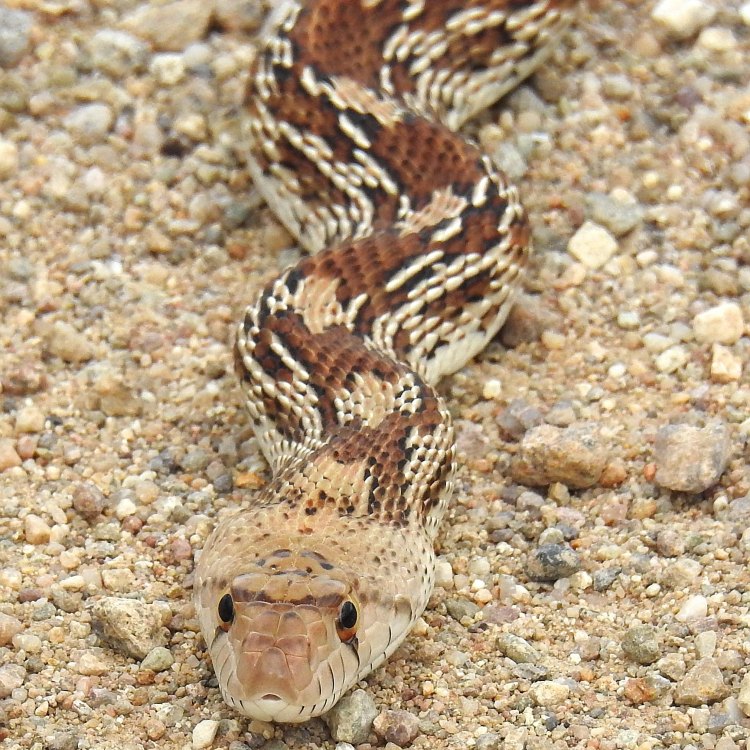
The Versatile Gopher Snake: A Master of Adaptation
Disclaimer: The content provided is for informational purposes only. We cannot guarantee the accuracy of the information on this page 100%. All information provided here may change without prior notice.

